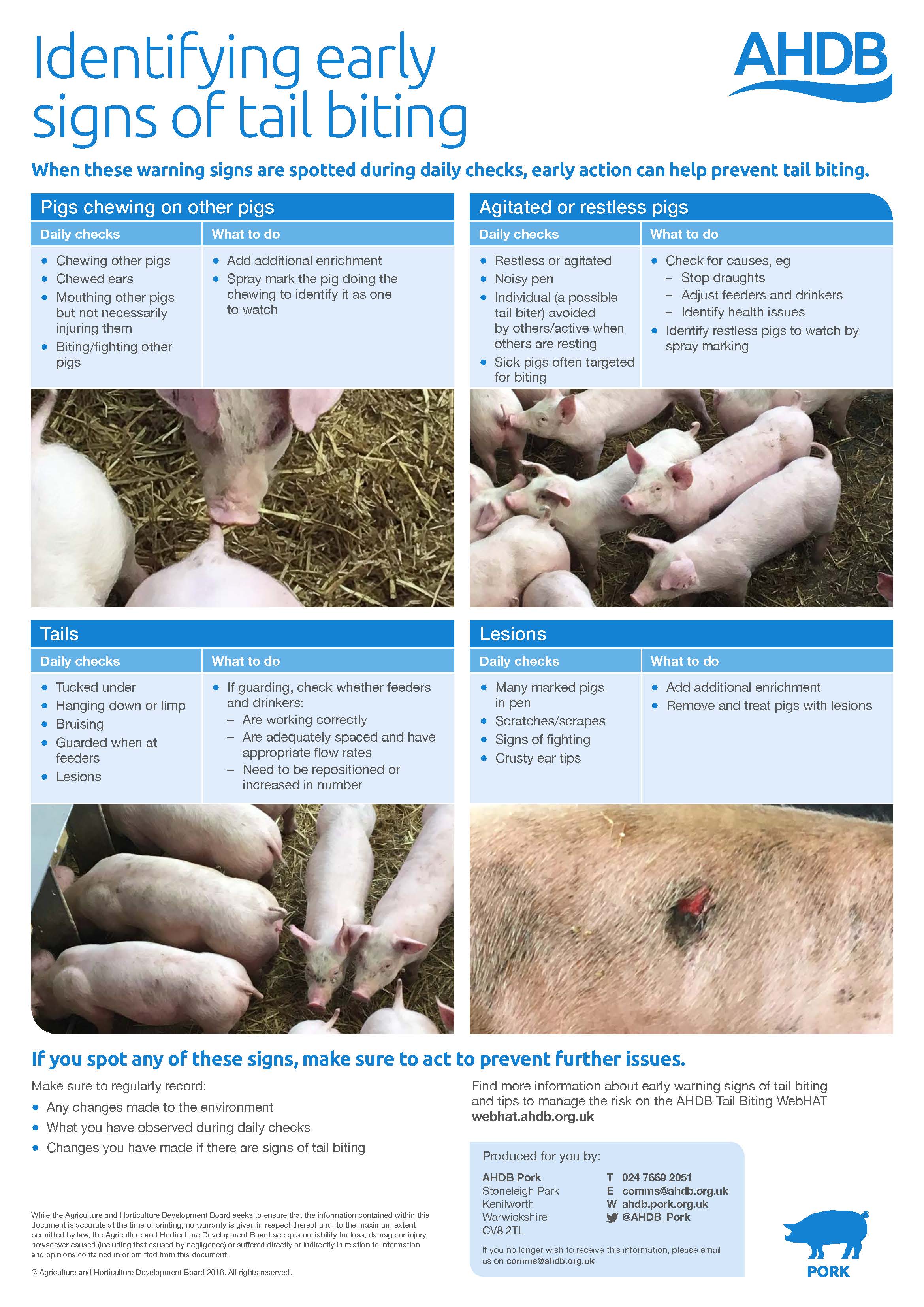WebHAT – helping you tackle tail biting
Friday, 30 September 2022
Since November 2021, Red Tractor members have been required to undertake an annual assessment of tail biting risk factors on their farms. This is in line with the 2020 Code of Practice for the Welfare of Pigs.
In addition, if you rear tail-docked pigs (regardless of whether you dock the pigs yourself or receive them already docked) you must also produce an action plan outlining the measures you are taking to minimise the risk of tail biting and the need for docking in the first place.
Dr Georgina McDowell, Technical Manager for Pigs at Red Tractor, said:
"Ultimately, tail docking should only be used as a last resort. Red Tractor’s standards around tail biting and tail docking are aimed at ensuring producers have fully evidenced that there is a need for tail docking, and that other measures to reduce the risk of tail biting, besides docking, have been attempted.”
What should you include in a tail biting action plan?
Action plans need to detail everything a farm is undertaking to reduce tail biting and to move away from the need to tail dock; these may be short- or long-term actions.
For example, trialling lower stocking densities, replenishing enrichment more frequently and seeking advice from a ventilation consultant.
During audits, assessors will be looking to verify whether the actions are implemented in line with the timelines detailed in the plan.
Important to note is that tail biting action plans differ from the vice action plan required in your Veterinary Health Plan (VHP), which must outline actions to be taken when a tail biting outbreak occurs, e.g. remove biter pig and spray affected tails.
Tools to help
You can use our web-based husbandry advisory tool (WebHAT) to identify risks associated with tail biting.
The tool will generate a report of prioritised tail biting risks and an action plan to reduce tail biting. It also gives practical suggestions to address the specific risks identified and templates for recording tail biting incidents on-farm.
Dr McDowell added:
“AHDB’s WebHAT is a useful resource that can be used to carry out a risk assessment for tail biting and to generate a bespoke action plan to mitigate those risks.”
Build your risk report and action plan
Red Tractor – measures to minimise risk of tail biting


